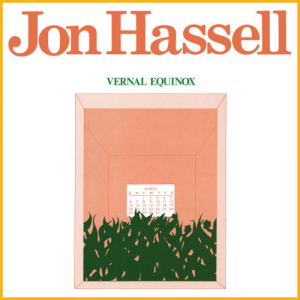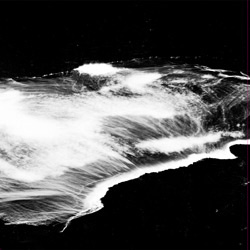 I first became aware of Jon Hassell’s music in the early 1980s because of his collaboration with Brian Eno on the Fourth World Volume 1: Possible Musics album. Then of course a little later he worked with David Sylvian on his rather wonderful Brilliant Trees album of 1983. He was one of the few EG label artists at the time that truly straddled the divide between jazz and ambient music, conjuring up strange exotic landscapes within his musical output.
I first became aware of Jon Hassell’s music in the early 1980s because of his collaboration with Brian Eno on the Fourth World Volume 1: Possible Musics album. Then of course a little later he worked with David Sylvian on his rather wonderful Brilliant Trees album of 1983. He was one of the few EG label artists at the time that truly straddled the divide between jazz and ambient music, conjuring up strange exotic landscapes within his musical output.
Side one opens with “Toucan Ocean”, a moody, slight drifting piece that is strong on rhythm. Fender Rhodes piano adds the bed of chords over the rolling waves of an ocean, and Hassell’s trumpet is barely recognisable as one as it is heavily filtered through a Buchla synthesizer made famous by Suzanne Ciani. The power of Hassell’s playing conjures up an alternative world that sits somewhere between imagination and reality. Jungle sounds introduce “Viva Shona”, with Hassell’s heavily treated echoed trumpet crying over the top of marimbas, making it sound as if you are pushing your way through deep undergrowth with exotic creatures crying from the trees overhead. It’s a heady brew and you can almost feel the tropical heat emanating from the speakers as the track progresses.
“Hex” features both Hassell’s filtered trumpet and also his piano put through an ARP synthesizer, which gives them both a very strange effect indeed; again, the track appears to have field recordings running underneath, while Nicholas Kilbourn’s talking drum adds pulses of percussion that gives more of an Indian feel, especially within Hassell’s trumpet scales and tones. Again we feel like we are pushing through lush vegetation only to discover some ancient temple overgrown with trees. “Blue Nile” is played over a deep drone from the Serge synthesizer, Hassell’s trumpet calling out from a mist of echo at dawn as if it’s being played from some tall tower, its sound feeling the airwaves of a small town. To my ears, this reminds me of my travels around north Africa and conjures up that same feeling I got from being there. The trumpet layers over itself, and becomes this wonderful all-embracing sound that feels both recognisable and as if it’s been created on another world.
This is truly the start of Hassell looking at the world in a different way and conjuring up cross-pollinations of its differing musical strands, and gives you that sense of elsewhere. Ending the album, “Caracas Night September 11, 1975” is a short piece that feels humid like a sultry night, and apparently this is a field recording of Hassell playing alone on top of a hill and the ambience that surrounded that moment.
This is a long overdue release of this incredible album that sounds wonderful on this great pressing. The music is a hybrid of jazz, ambient, world music and a little bit of Karlheinz Stockhausen, whom Hassell studied under at a similar time to Holger Czukay of Can. There is a wonderful warm heat that emanates from the grooves of Vernal Equinox and understandably it is regarded as one of the fifty best ambient albums of all time. Give it a spin and let your soul go on a journey to strange lands.-Gary Parsons-



